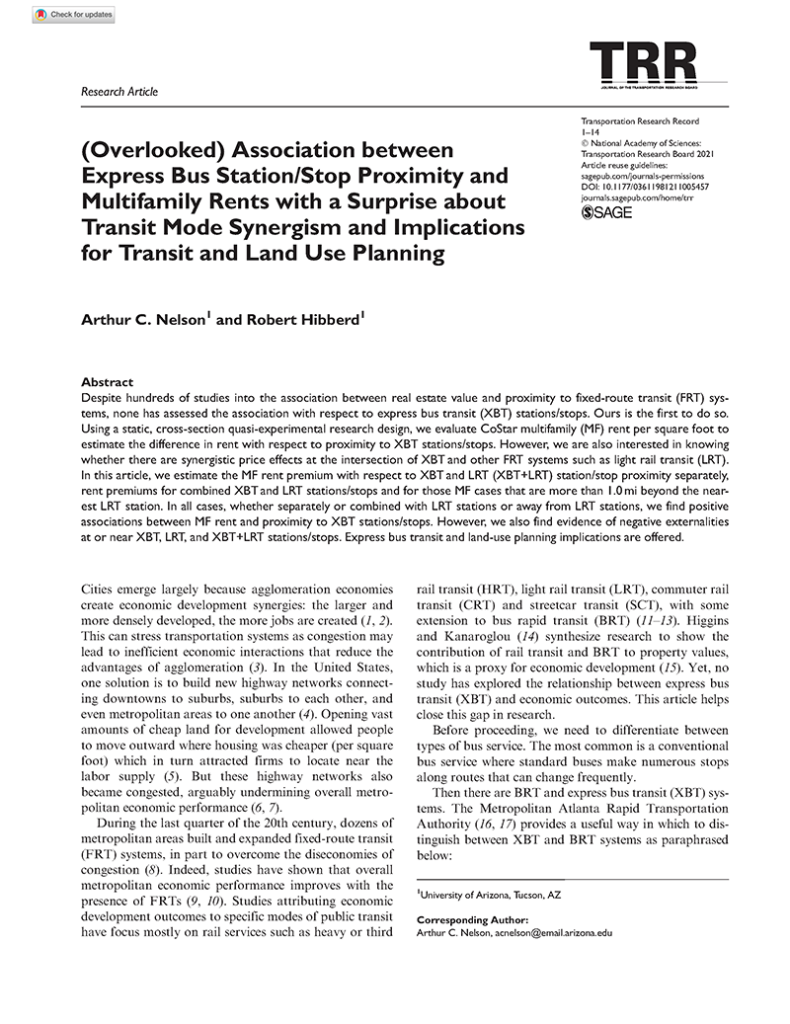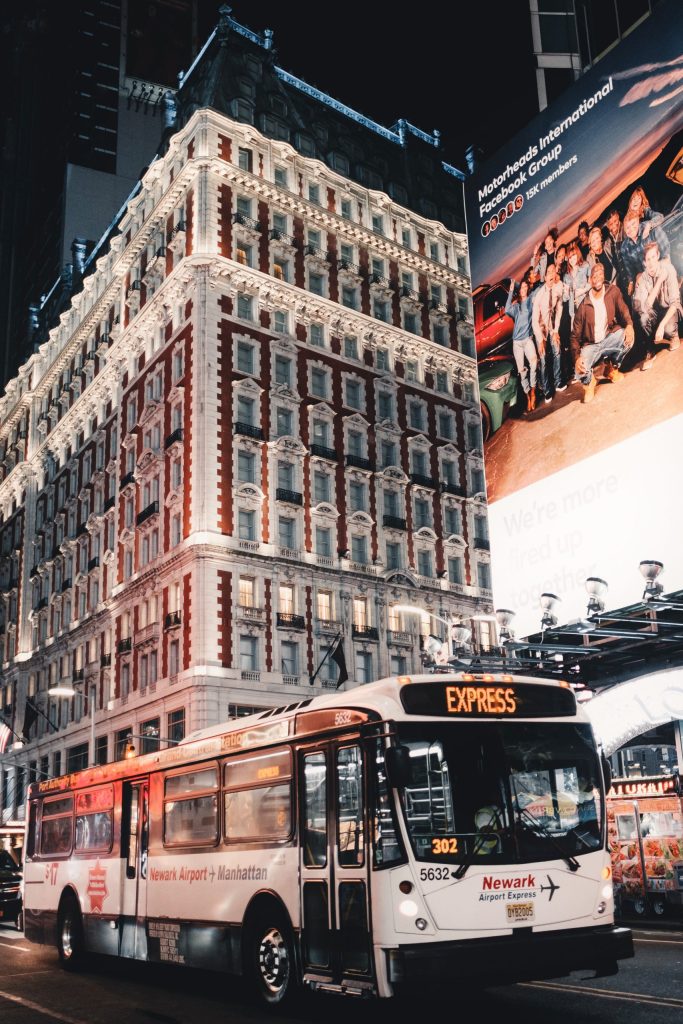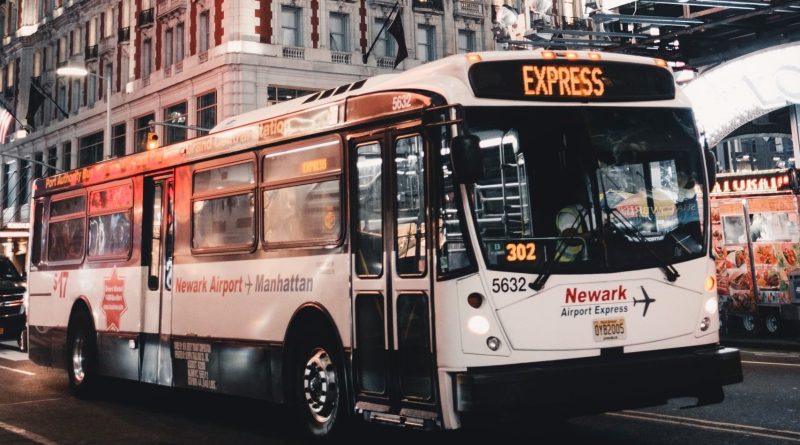(Overlooked) Association Between Express Bus Station / Stop Proximity and Multifamily Rents with a Surprise About Transit Mode Synergism and Implications for Transit and Land Use Planning. (2021). Arthur C. Nelson, Professor of Urban Planning and Real Estate Development and Robert Hibberd, Graduate Research Assistant, University of Arizona.

In “(Overlooked) Association Between Express Bus Station / Stop Proximity and Multifamily Rents with a Surprise About Transit Mode Synergism and Implications for Transit and Land Use Planning,” authors Arthur C. Nelson and Robert Hibberd find a significant connection between real estate values and Express Bus Transit (XBT) stations.
Their research relies on the AMM (Alonso, Mills, and Muth) Theory that transportation costs reduce land values as distance increases. The theory is typically thought of in relation to the city center: centrally-located land is in high demand, and thus has lower transportation costs. When you move farther from the Central Business District (CBD), traversing this distance is more expensive, but land is cheaper. The concept can also apply on a smaller scale, where real estate prices fall in relation to transit node proximity. This connection has been studied with other forms of mass transit, but not yet with XBT.
The authors test this theory examining XBT stations and stops in 16 areas across the United States. They chose not to include metropolitan areas in the Northeast or Great Lakes regions with more than 5 million residents, San Francisco or Los Angeles, in the hopes of more easily teasing out a relationship between proximity to XBT and multifamily (MF) housing rents.
Nelson and Hibberd write that the market takes into account both positive and negative aspects of proximity to a transit stop. In the market, negative externalities, such as traffic, as well as noise and light pollution, may depress rents, while the advantages—convenient connectivity to the CBD—may raise rents. If the benefits outweigh the disbenefits, then the rent around the XBT station should be higher than the regional average. In general, the authors theorize an inverted U-curve as distance increases: lower rents are buoyed up by convenient transit access and then eventually return to average.

Previous research, which looked at Bus Rapid Transit (BRT), found that rents were 3.0 percent higher within a half-mile of a BRT stop, and 1.7 percent higher in the next half-mile band. The researchers note that BRT is more analogous to light rail transit or a subway than is XBT.
Nelson and Hibberd identified a clear, statistically significant connection between MF rent rates and proximity to XBT stations and stops. They found that in the first one-eighth mile band around the transit facility, rents increased by 4.6 percent more than the area mean, by 6.7 percent in the second one-eighth mile band, and by 4.9 percent in the third –thus, the inverted U-curve. However, for light rail transit (LRT) alone, as distance increased each one-eighth mile, the rent effect was an insignificant 0.5 percent, 4.0 percent, and then 1.0 percent above average, respectively. Based on the findings, one imagines the externality cost-benefit analysis for XBT and LRT must be different.
This research suggests two chief implications for planners: the first is that people are willing to pay a premium to live near XBT stations and stops. However, rents decrease, increase, and then decline over distance, signifying that the externalities outweigh the benefits of XBT proximity in the immediate area. Planning solutions to address this impact could include landscaping, roadway overhauls, and barriers to protect adjacent residents from light and noise pollution.
Because this research finds that people are willing to pay a premium for XBT access, the authors propose that XBT service should be expanded to fit this demand. Express bus is not what one typically thinks of in terms of mass transit, but it provides value and, as a service, commands a premium. Express bus transit has a significant impact on multifamily rents in its vicinity, and this relationship should be considered by planners and policymakers in the future.

